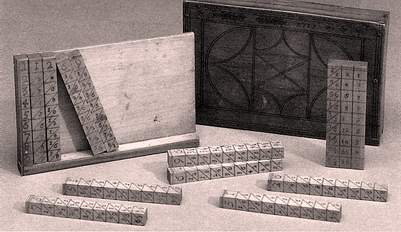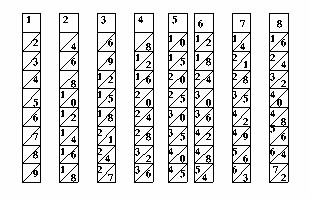
John Napier

John Napier was born in 1550 in Edinburgh, Scotland. He was the son a of an important Scottish land owner. Napier began his education at St Andrews University when he was 13 years old. He never received a degree from that school, and is thought to have left at some point to continue his education on the continent. Napier ran his family estates after marriage and devoted a fair amount of time to his strong interest in theology. Napier dies in 1617 in Edinburgh.
Napier's work in mathematics seemed more recreational, and certainly took a back seat to his studies in theology. Nevertheless, he is credited with a number of innovations. He invented logarithms, contributed to solving spherical triangles, introduced decimal notation for fractions, and found exponential expressions for trigonometric functions. In addition to his more purely intellectual pursuits, Napier was a gifted and avid inventor. Napier's bones, pictured below, are among his more famous. The bones consist of a set of rods together with a rack. Napier labeled the side of the rack from 2 to 9 so that the user combined the rods and rack to create a 2 to 9 multiplication table for any number. One selects the rods corresponding to the digits in the number and places them together in the rack. To multiply the number by 4, for example, one proceeds along the row marked 4 going from right to left adding the numbers in the bottom of each parallelogram to the numbers in the top of the next parallelogram give the next digit.


Bones arranged so that one has a table for calculating multiples of 125.
In the bounded area one sees the calculation for 125 x 2: First digit 2,
second digit 4+1, and third digit 0 to give one the answer 250.
